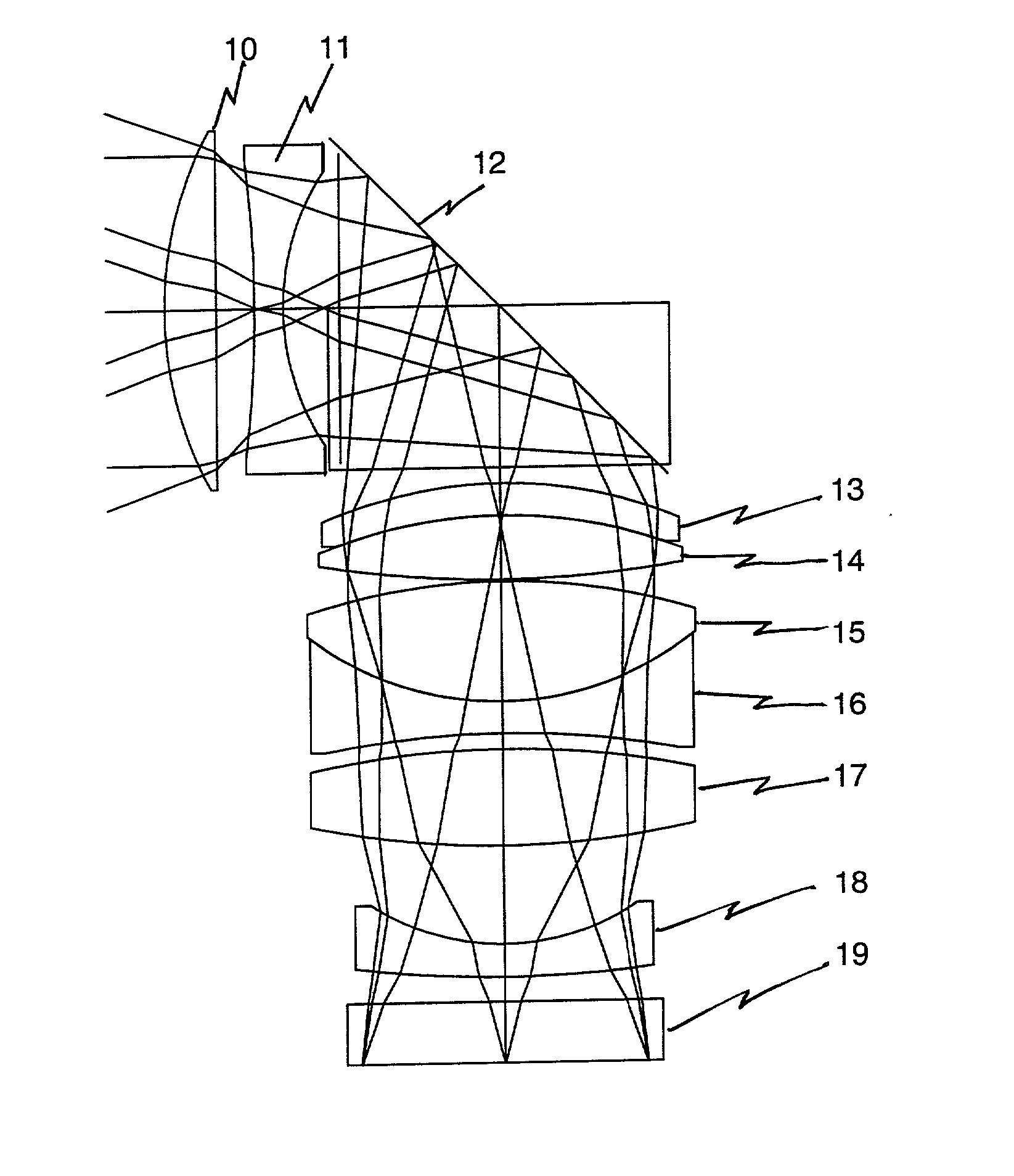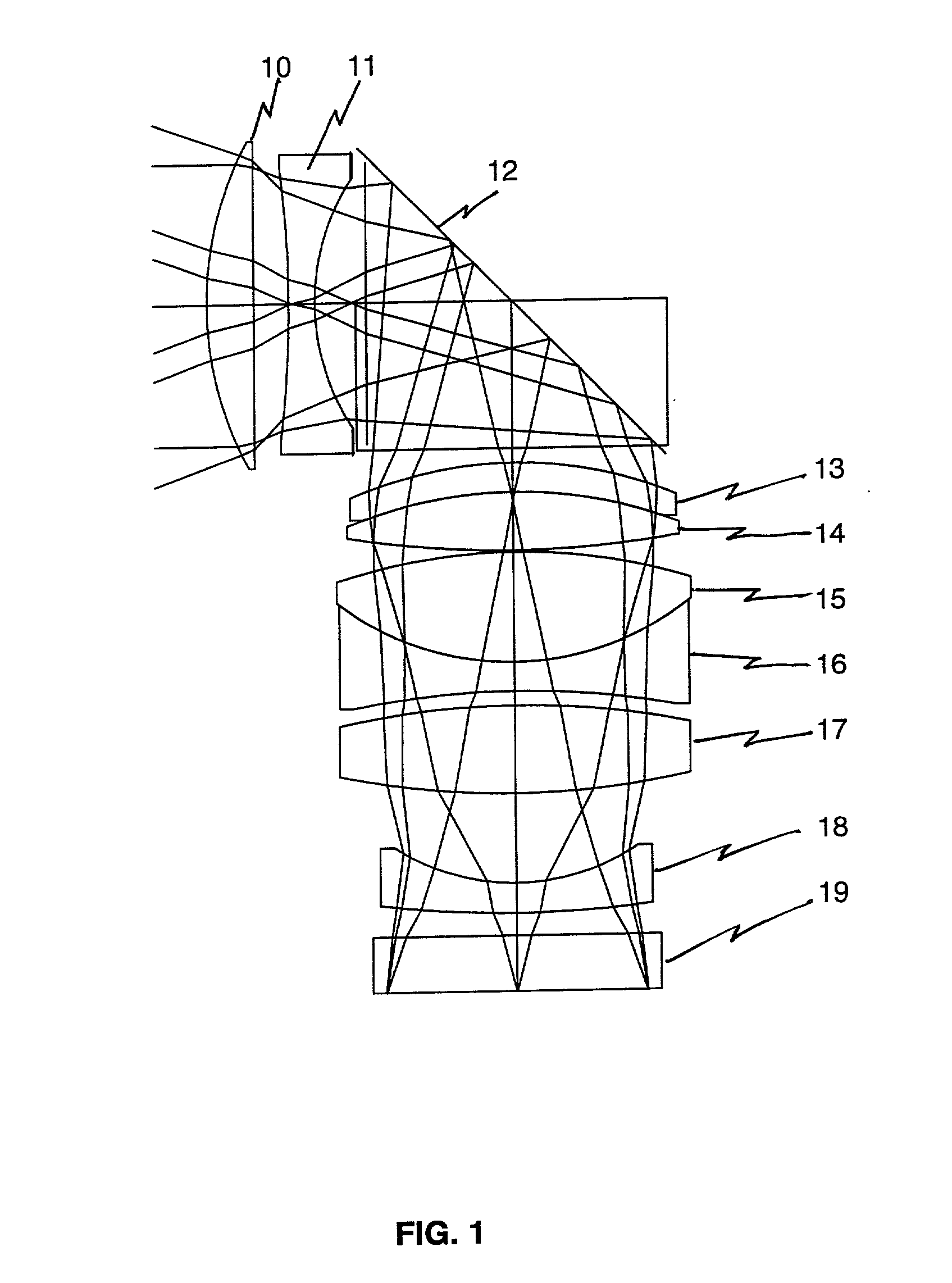Folded image intensifier objective lens
- Summary
- Abstract
- Description
- Claims
- Application Information
AI Technical Summary
Problems solved by technology
Method used
Image
Examples
Embodiment Construction
[0015] Referring now to the drawings, and more particularly to FIG. 1, there is shown is a lens ray trace of the objective lens assembly of the invention. Light within the 0.6 to 0.9 micron spectral band from a scene enters the first pair of lenses, elements 10 and 11, which together form a negative powered air-spaced doublet. Light then passes through a right-angle fold prism 12, imparting a 90 degree bend in the optical path. Light then passes through a strong positive powered doublet consisting of elements 13 and 14. Element 13 is specifically designed to allow interchangeable use of a standard filter glass (R-64) or a standard clear glass (Schott PK51A) as desired. Light then continues through the doublet consisting of positive powered lens, element 15 and a negative lens, element 16, and then through a positive lens, element 17. The curvatures of lens elements 16 and 17 are matched, such that this group could become a cemented triplet if desired by the lens manufacturer. Light ...
PUM
 Login to View More
Login to View More Abstract
Description
Claims
Application Information
 Login to View More
Login to View More - R&D
- Intellectual Property
- Life Sciences
- Materials
- Tech Scout
- Unparalleled Data Quality
- Higher Quality Content
- 60% Fewer Hallucinations
Browse by: Latest US Patents, China's latest patents, Technical Efficacy Thesaurus, Application Domain, Technology Topic, Popular Technical Reports.
© 2025 PatSnap. All rights reserved.Legal|Privacy policy|Modern Slavery Act Transparency Statement|Sitemap|About US| Contact US: help@patsnap.com



